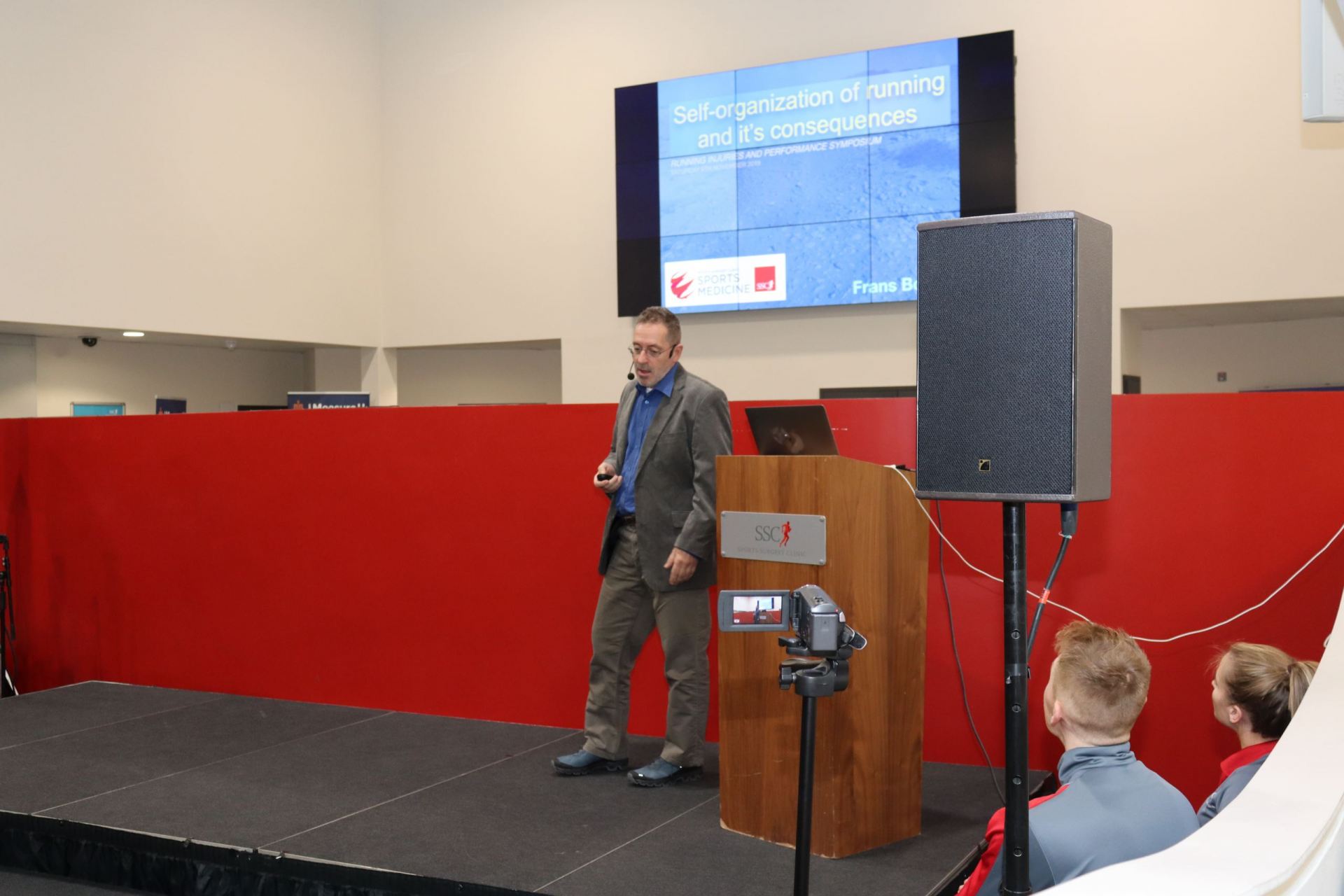Irish Times Journalist Ian O’Riordan discusses ACL injuries with Mr Ray Moran.
Ray Moran picks up a plastic model of the knee, and holding it between both hands, makes one simple twisting movement from side to side as if breaking the neck of a little bird.
“What happens is you turn, or land, or put some tension into it, and ‘snap’, it just goes,” he says, pointing to a thin, flesh-coloured fibrous strip, which looks as if it’s been threaded up through the middle of the knee, joining the thigh bone to the shin bone. “And to some extent, it’s not fit for purpose. It’s certainly a bit miserable for the job it has to do.
“Because relative to the size of the knee, it’s not a big member. And it is still such an innocuous injury, in many cases involving a simple change of direction, with no contact whatsoever. I suppose that’s still the scary thing about it.”
It is the anterior cruciate ligament – more typically whispered as the ACL, sometimes going unmentioned for fear of a jinx, or else cursed out loud with a series of dirty expletives whenever that ‘snap’ is heard on the field of play. And for all the advances in sports science and strength and conditioning, it can still tear apart as easy and wretchedly as putting scissors to a piece of string.
Which is where Moran comes in: he wasn’t the first person in the world to perform surgical reconstruction on the ACL, but after 20 years in the business, he’s long since lost count of how many times he’s made the small surgical incision in the front of the knee, inserted the tiny arthroscopic camera, and with freshly stripped portions of tendon sliced from the hamstring and kneecap, begins to deftly rethread the cruciate, finishing it all off in less than an hour by stitching everything back into place – then sending the patient off to begin nine months rehabilitation.
Moran is telling me this in his consultant’s suite at the UPMC Sports Surgery Clinic in Santry, where, a couple of hundred times every year, he tells patients from a wide referral basis the same thing, possibly in more lurid detail, before calmly reassuring them it is all perfectly fixable. Still, it’s hard to imagine being told this for real, especially the elite player who would miss a full season as a result. But if someone has to tell you, they don’t come better qualified than Moran.
It’s been a long learning process. After returning from a fellowship in the US, Moran was working in the A&E at Beaumont, where one night a GAA player came in with a broken arm, lining up with the other casualties. “I remember thinking ‘this doesn’t make sense’, there has to be a better way”: now, the Santry Clinic – which Moran started up in 2007 – is a one-stop-shop for the full array of sporting ailments, not just those requiring surgery.
Recently they have added a running re-education system designed to improve the rehabilitation.
Yet he is their Dr Cruciate, knowing everything there is to know about that thin, flesh-coloured fibrous strip: with that Moran can also strip away the many myths from the simple realities, including the notion that ACL tears are somehow only a recent curse.
“We’ve certainly evolved from chasing the bison, or whatever it is, to feed the family,” he says. “And the sport has taken the knee a little bit by surprise, bringing in high-speed torque, and rotation. And the cruciate is a very small ligament for that job. So a player changes position, or jumps and fields a ball, and the knee buckles on him.
“But what’s new about that? Those features have always been in games. The reality “The reality is that 20 years ago there was very little recognition of the cruciate. There weren’t MRI scans. I still come across guys in their 50s and 60s who tore their cruciate 20 years ago and just didn’t realise it. They had enough cartilage on the side of the knee to get through it. But they have no cruciate ligament. In fact, a lot of those were told they had a ‘weak’ knee. Or a ‘dodgy’ knee.
But nearly all of those were actually torn cruciate, and just weren’t recognised. Some of them were actually sent back to play. That seems ludicrous now, but that was the sequence.”
Moran admits he came into the knee surgery business with a bit of a head start – not just because of his own sporting background, having played soccer himself from an early age growing up in Dublin, but also as the older brother of Kevin Moran, formerly of Dublin Gaelic football, Manchester United and Republic of Ireland fame.
“I did play a bit myself, but I was useless,” he says. “Let’s be quite clear about that. And at home, as the older brother, I had to reluctantly recognise that Kevin was actually good. So he sent me in the direction of early retirement. But some of the sporting interest came off my brother, yes, and I think it was natural enough that I went into sports practice.
“But with patients, too, coming from a sporting background, you’d be somewhat more empathetic. And that’s really lived on.
You would never put a patient at risk. But at the same time, you’re not immune to it being the beginning of a season, a big match coming up, or whatever. “Sometimes in those circumstances, you balance the judgment a little between coming back a little earlier, with maybe a little bit more risk. But not in a reckless way. There’s a grey area in the middle, where you might be able to shave a couple of weeks off the rehab programme.”
That, however, is as good as it gets: along with the notion that cruciate tears didn’t happen 20 years ago, there is no truth in the notion that someday the injury will be preventable, or even surgically repaired to the point of near-total reliability.
“No, we won’t ever prevent it. It’s about diminishing the prevalence. There is some evidence, in Norway, for example, with female netballers, that certain training programmes can diminish the prevalence. And that can be applied to all sports. There are some surgical changes as well, for high-risk cases, like using a bit of the iliotibial band, to create a new ligament.
Like a sort of bionic knee? “No, and there won’t be. We could reach the stage where a six-month return would be considered a quick-fix. And we do get some cases where if its tears off very high, or very low, it can be knitted back together. But repairing is never as good as replacing.”
There was, a few years ago, also the notion that surgical intervention mightn’t be needed at all, that the injured player could carry on through rehab alone. This is what Henry Shefflin thought, before the 2010 All-Ireland hurling final, although unfortunately, he didn’t last long.
“You always get cases when people can manage, through muscular control. But they are the exception. And you can’t build a practice on exception. The downside of not doing the surgery is the risk of further damage to the knee joint.
“And if it’s ruptured it’s usually complete. So getting rid of the problem is not an option. A guaranteed no. We could be still sitting here in 100 years and talking about cruciate injuries. Because it’s wrong to promote the idea we can eliminate the risk. That’s just fantasy.”
There are, however, other notions, such as the GAA player somehow being more at risk (Cork footballer Colm O’Neill, for example, currently recovering from a third tear in six years, and he’s not yet 25); or the notion modern football boots are somehow to blame, with their rigid blades rather than studs. Moran strips all that away, too.
“The blades were getting blamed, but if they were slipping on the foot, the level of rotation going through the knee would be diminished. If they were the old big studs, then the foot wouldn’t slip as easy, and that would have the opposite effect, increase the rotation going through the knee. So I’m not so sure about the boots.
“Now we do see an awful lot of GAA players, but that’s simply because of the numbers that play. The rates would be the same in basketball, and most of the field sports that involve any rotational episode. This is a ‘land-buckle-torque’ injury. It’s doesn’t matter how well conditioned the player is, either. Because it’s a mechanism thing.
“The increase in physicality is a concern, especially in rugby, but, by the same virtue, players are more conditioned now than ever before. It’s always a bit of a balancing act, and any field sport will bring on that reality.
“So you’re either going to play sport or you’re not. That’s not being fatalistic about it. That’s just the way it is. Anyone who thinks you can divorce that reality from the game, well, it ain’t going to happen, We can hose it down a bit, but it will be there. Injury is part of the nature of sport.”
All this talk leaves me feeling a little weak in both knees, walking carefully out of the door, thinking of that little bird breaking its neck, knowing at least I’d be close to the safest pair of hands.
| For further information on ACL Surgery or to make an appointment with an Orthopaedic Consultant, please contact [email protected] |












 Doug Howlett’s shoulder forced him out, Ronan O’Gara decided it was time for a new chapter and, tonight, Isa Nacewa will hope to end his career as gracefully as he ended so many attacking moves.
Doug Howlett’s shoulder forced him out, Ronan O’Gara decided it was time for a new chapter and, tonight, Isa Nacewa will hope to end his career as gracefully as he ended so many attacking moves.







